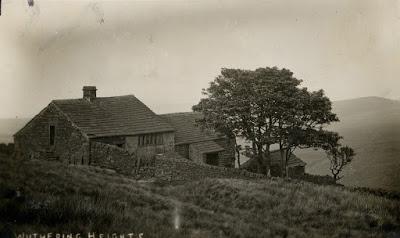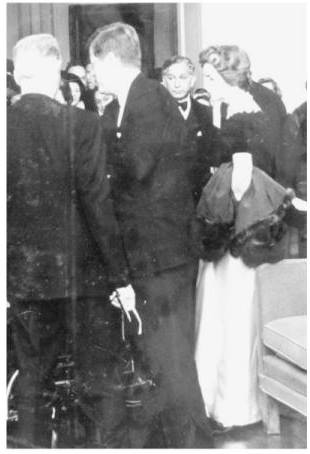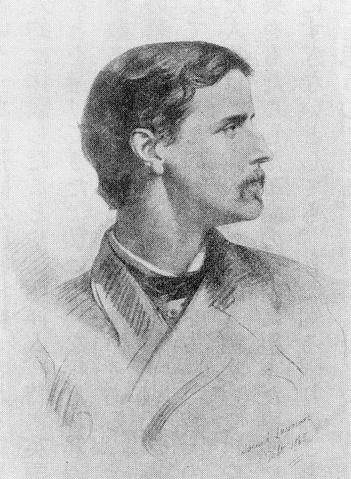
This is the plaque that greets you when you reach Top Withens, the ruined farmhouse on the Yorkshire moors that was supposedly the model for Emily Brontë’s Wuthering Heights. Thousands of tourists make the steep climb from Haworth to this remote place of pilgrimage. I feel sorry for those who brave the mud and the changeable weather, loaded down with expensive cameras and Thermos flasks, to find that this isn’t the ‘real’ Wuthering Heights at all. Brontë scholars agree that there’s no such thing. So why has the myth become attached to this tumbledown farmhouse on the moors?
The first definite association between Wuthering Heights and Top Withens appears in a nineteenth century edition of the Brontës’ work. In 1872 publisher George Smith commissioned an artist to illustrate a new anthology. He wrote to Ellen Nussey, a close friend of Charlotte’s, asking if she knew the names and locations of the ‘places so vividly described’ in the sisters’ work. Frustratingly, we have no record of Nussey’s reply but Smith certainly wrote to thank her for her help, so we must assume she gave him some pointers. When the edition appeared, Wuthering Heights included a drawing of the Sladen valley, with three isolated farmhouses in view: Near, Middle and Top Withens.
I’ve visited several times, in different seasons and different weathers, while researching The Coffin Path – a 17th century ghost story set on an isolated moorland farm. Depending on which track you take it’s possible to find yourself completely alone, no human habitation in view and nothing but a vast sky, the call of curlew and the whistle of the ever-present wind to spark the imagination. It is wild, remote and atmospheric.

Top Withens, March 2015
We have a tendency, these days, to romanticise these moors, but the Brontë sisters would not have experienced them as we do, with our waterproofs and wellies, a place to be visited before retreating to the safety of Haworth for a cream tea or a pint in The Black Bull. In the past the moors were seen, rightly, as dangerous places, savage and deadly, associated with superstition and the supernatural, the blanket bog a path straight down to Hell.
Emily Brontë had an intense relationship with these moors. Throughout her life she walked them regularly, alone or with her sisters, and they feature heavily in her writing. Her fictional interpretation of the landscape is one of the reasons for our own romantic view, consolidated over time by rose-tinted onscreen iterations of her famous novel, but Emily would have been well aware of the hardship and danger for the people who lived and worked in this unforgiving environment.
The first recorded owner of the place called ‘Wythens’ (later to become Withens or Withins) was George Bentley, a clothier who bought the land from Thomas Crawshaye and his sister, Anne, in 1567. Of the Crawshayes and those that came before, we have no knowledge, but the land was farmed and they probably kept cattle, rather than sheep. On his death, George bequeathed his estate to his grandson William and then, in 1591, the land was divided between William’s three sons, Martyn, Luke and John. It’s believed the three brothers built the three farmhouses we know today.
The next recorded owner (and indeed the first reference to Top Withens itself) doesn’t appear until 1813; a John Crabtree who, in turn, leased it to Jonas Sunderland. Jonas, his wife Ann and their descendants lived at Top Withens until the end of the nineteenth century. It’s likely the family would have known the Brontë siblings, at least by sight. By the time the house passed to Ann Sharpe (née Sunderland) and her husband, Samuel in 1888, the area had already been dubbed ‘Brontë Country’ (the term first appears in a guidebook of that year).

The Sunderlands at Top Withens
By 1895, Ann Sharpe was dead, leaving Samuel to bring up their young daughter, Mary. It must have proved too demanding a prospect for Samuel – a year later they had moved to a valley farm named Sheep Holes and the house was abandoned.
As far as we know it stayed that way until the early 1920’s when an invalided ex-soldier named Ernest Roddie took up residency. The Yorkshire Evening Post ran a series of articles about him and even sent a reporter to interview the mysterious Ernest, who lived alone with just his dogs and chickens for company. Following his first winter he said:
‘I think Top Withens is the place for me all right. We have some rough weather up here … It’s been fearful cold since Christmas and there are days when the snow’s been so thick I couldn’t get the cart down to Stanbury.’ But, he said ominously, ‘a man can’t be lonely at Wuthering Heights.’
How much of this is poetic license on the part of the journalist we’ll never know, but by 1926, the harsh lifestyle had beaten Ernest too and he moved back down to Haworth, leaving the house to the elements.

Top Withens circa 1930
The crumbling ruins have been a source of scholarly conflict ever since. A grade II listing in the 1950s was revoked in 1991 and clumsy concrete repairs do little to retain any historical authenticity. The Brontë Society famously repudiated the link with Wuthering Heights, as the firmly worded plaque suggests, but Brontë fans still come from all over the world to pay homage.
Emily would have known Top Withens as a working farm inhabited by the Sunderland family. Its situation at the top of the valley on the edge of the windswept moor may bring to mind the setting of the Heights, but the building itself is not the house described in her novel.
Several other houses that Emily would have known have been put forward as prototypes, including Ponden Hall (also mooted as the model for Thrushcross Grange) and High Sunderland Hall, now sadly demolished. My money is on the latter. But I suspect it’s not that simple. The Coffin Path is similarly set on an isolated working farm on the West Yorkshire moors and I’ve used elements from several local houses to create a fictional one: Scarcross Hall. I suspect that’s exactly what Emily did too.
The Coffin Path by Katherine Clements is published by Headline Review














